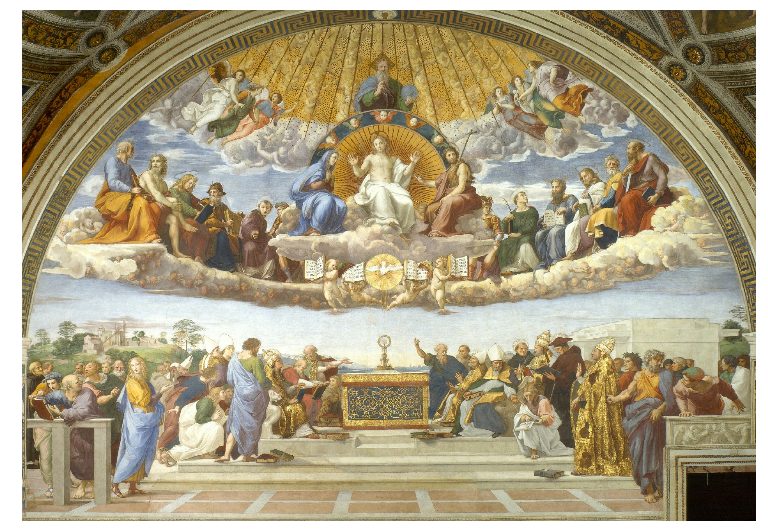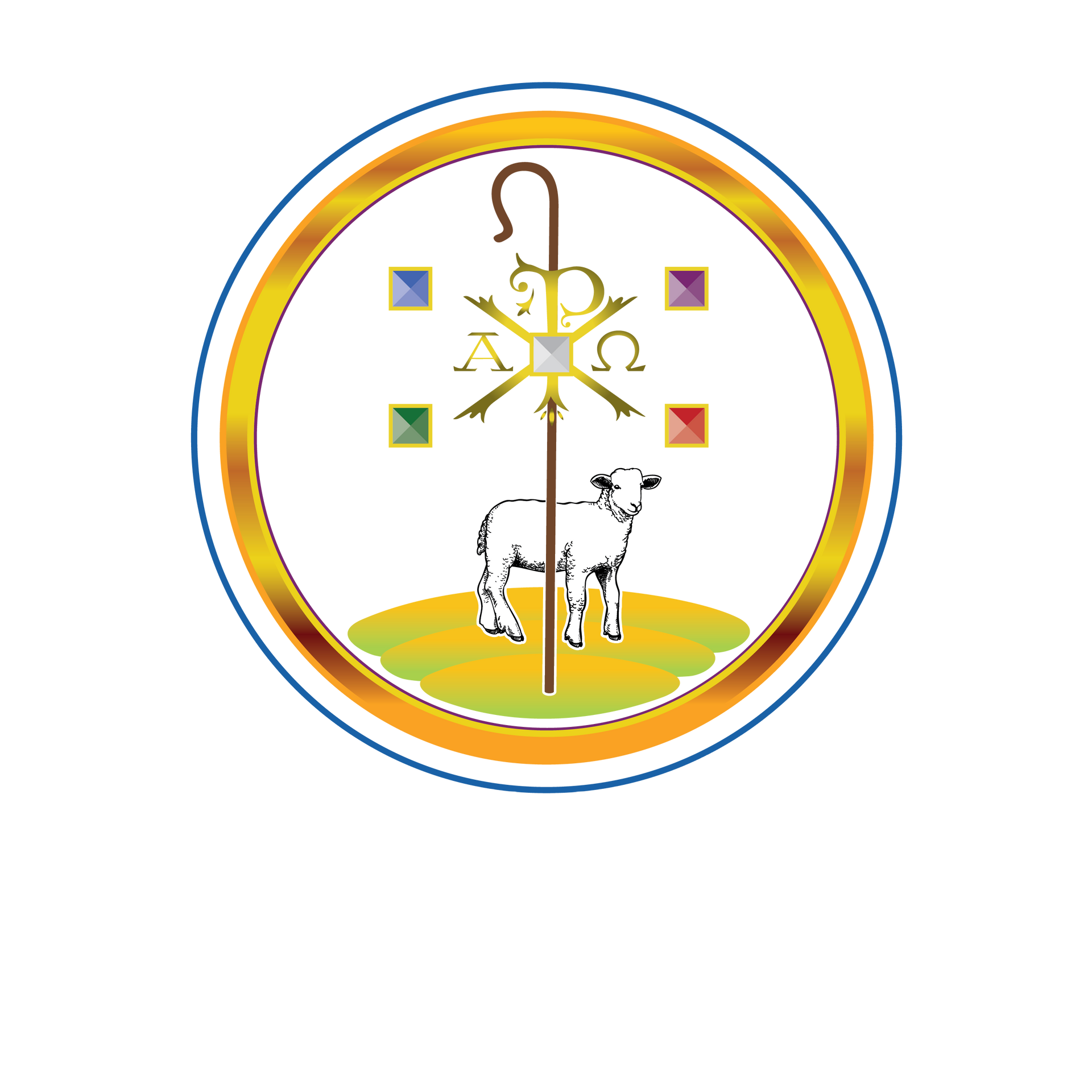Theology
of Mass
The Mass is derived from the Latin word “missa,” meaning mission, sending, and to be sent (C.C.C. 887). The Liturgical Celebration of the Eucharist is closest encounter that we as Catholics and Eastern rite Churches have that reveals the real presence of Christ in his Church.
The Mass of all ages
“As early as the second century we have the witness of St. Justin Martyr for the basic lines of the order of the Eucharistic celebration. They have stayed the same until our own day for all the great liturgical families. St. Justin wrote to the pagan emperor Antoninus Pius (138-161) around the year 155, explaining what Christians did:
On the day we call the day of the sun, all who dwell in the city or country gather in the same place. The memoirs of the apostles and the writings of the prophets are read, as much as time permits. When the reader has finished, he who presides over those gathered admonishes and challenges them to imitate these beautiful things. Then we all rise together and offer prayers for ourselves . . .and for all others, wherever they may be, so that we may be found righteous by our life and actions, and faithful to the commandments, so as to obtain eternal salvation. When the prayers are concluded we exchange the kiss. Then someone brings bread and a cup of water and wine mixed together to him who presides over the brethren. He takes them and offers praise and glory to the Father of the universe, through the name of the Son and of the Holy Spirit and for a considerable time he gives thanks (in Greek: eucharistian) that we have been judged worthy of these gifts. When he has concluded the prayers and thanksgivings, all present give voice to an acclamation by saying: ‘Amen.’ When he who presides has given thanks and the people have responded, those whom we call deacons give to those present the “eucharisted” bread, wine and water and take them to those who are absent.
The liturgy of the Eucharist unfolds according to a fundamental structure which has been preserved throughout the centuries down to our own day. It displays two great parts that form
– the gathering, the liturgy of the Word, with readings, homily and general intercessions;
– the liturgy of the Eucharist, with the presentation of the bread and wine, theconsecratory thanksgiving, and communion.
The liturgy of the Word and liturgy of the Eucharist together form “one single act of worship”; The Eucharistic table set for us is the table both of the Word of God and of the Body of the Lord.
Is this not the same movement as the Paschal meal of the risen Jesus with his disciples? Walking with them he explained the Scriptures to them; sitting with them at table “he took bread, blessed and broke it, and gave it to them.”
The movement of the celebration
All gather together. Christians come together in one place for the Eucharistic assembly. At its head is Christ himself, the principal agent of the Eucharist. He is high priest of the New Covenant; it is he himself who presides invisibly over every Eucharistic celebration. It is in representing him that the bishop or priest acting in the person of Christ the head (in persona Christi capitis) presides over the assembly, speaks after the readings, receives the offerings, and says the Eucharistic Prayer. All have their own active parts to play in the celebration, each in his own way: readers, those who bring up the offerings, those who give communion, and the whole people whose “Amen” manifests their participation.
The Liturgy of the Word includes “the writings of the prophets,” that is, the Old Testament, and “the memoirs of the apostles” (their letters and the Gospels). After the homily, which is an exhortation to accept this Word as what it truly is, the Word of God, and to put it into practice, come the intercessions for all men, according to the Apostle’s words: “I urge that supplications, prayers, intercessions, and thanksgivings be made for all men, for kings, and all who are in high positions.”
The presentation of the offerings (the Offertory). Then, sometimes in procession, the bread and wine are brought to the altar; they will be offered by the priest in the name of Christ in the Eucharistic sacrifice in which they will become his body and blood. It is the very action of Christ at the Last Supper – “taking the bread and a cup.” “The Church alone offers this pure oblation to the Creator, when she offers what comes forth from his creation with thanksgiving.” The presentation of the offerings at the altar takes up the gesture of Melchizedek and commits the Creator’s gifts into the hands of Christ who, in his sacrifice, brings to perfection all human attempts to offer sacrifices.
From the very beginning Christians have brought, along with the bread and wine for the Eucharist, gifts to share with those in need. This custom of the collection, ever appropriate, is inspired by the example of Christ who became poor to make us rich: Those who are well off, and who are also willing, give as each chooses. What is gathered is given to him who presides to assist orphans and widows, those whom illness or any other cause has deprived of resources, prisoners, immigrants and, in a word, all who are in need.
The anaphora: with the Eucharistic Prayer – the prayer of thanksgiving and consecration – we come to the heart and summit of the celebration:In the preface, the Church gives thanks to the Father, through Christ, in the Holy Spirit, for all his works: creation, redemption, and sanctification. The whole community thus joins in the unending praise that the Church in heaven, the angels and all the saints, sing to the thrice-holy God.
In the epiclesis, the Church asks the Father to send his Holy Spirit (or the power of his blessing) on the bread and wine, so that by his power they may become the body and blood of Jesus Christ and so that those who take part in the Eucharist may be one body and one spirit (some liturgical traditions put the epiclesis after the anamnesis). In the institution narrative, the power of the words and the action of Christ, and the power of the Holy Spirit, make sacramentally present under the species of bread and wine Christ’s body and blood, his sacrifice offered on the cross once for all.
In the anamnesis that follows, the Church calls to mind the Passion, resurrection, and glorious return of Christ Jesus; she presents to the Father the offering of his Son which reconciles us with him. In the intercessions, the Church indicates that the Eucharist is celebrated in communion with the whole Church in heaven and on earth, the living and the dead, and in communion with the pastors of the Church, the Pope, the diocesan bishop, his presbyterium and his deacons, and all the bishops of the whole world together with their Churches.
In the communion, preceded by the Lord’s prayer and the breaking of the bread, the faithful receive “the bread of heaven” and “the cup of salvation,” the body and blood of Christ who offered himself “for the life of the world”: Because this bread and wine have been made Eucharist (“eucharisted,” according to an ancient expression), “we call this food Eucharist, and no one may take part in it unless he believes that what we teach is true, has received baptism for the forgiveness of sins and new birth, and lives in keeping with what Christ taught.” (Catechism of the Catholic Church: Second Edition)
From the very beginning, Christians have gathered together in the breaking of the Bread, and they have kept faithfully the command of the Lord. The Bishops state, “We know ourselves to be bound by the command the Lord gave on the eve of His Passion: “Do this in remembrance of me. This command of celebration is what Catholics call the memorial of his sacrifice—the Holy Spirit reminds God the Father the salvific work Christ accomplish for the sake of our salvation.
“The Eucharist is the memorial of Christ’s Passover, the making present and the sacramental offering of his unique sacrifice, in the liturgy of the Church which is his Body. In all the Eucharistic Prayers we find after the words of institution a prayer called the anamnesis or In the sense of Sacred Scripture the memorial is not merely the recollection of past events but the proclamation of the mighty works wrought by God for men. In the liturgical celebration of these events, they become in a certain way present and real. This is how Israel understands its liberation from Egypt: every time Passover is celebrated, the Exodus events are made present to the memory of believers so that they may conform their lives to them.
In the New Testament, the memorial takes on new meaning. When the Church celebrates the Eucharist, she commemorates Christ’s Passover, and it is made present the sacrifice Christ offered once for all on the cross remains ever present. “As often as the sacrifice of the Cross by which ‘Christ our Pasch has been sacrificed’ is celebrated on the altar, the work of our redemption is carried out.”
Because it is the memorial of Christ’s Passover, the Eucharist is also a sacrifice. The sacrificial character of the Eucharist is manifested in the very words of institution: “This is my body which is given for you” and “This cup which is poured out for you is the New Covenant in my blood.” In the Eucharist Christ gives us the very body which he gave up for us on the cross, the very blood which he “poured out for many for the forgiveness of sins.”
The Eucharist is thus a sacrifice because it re-presents (makes present) the sacrifice of the cross, because it is its memorial and because it applies its fruit:
[Christ], our Lord and God, was once and for all to offer himself to God the Father by his death on the altar of the cross, to accomplish there an everlasting redemption. But because his priesthood was not to end with his death, at the Last Supper “on the night when he was betrayed,” [he wanted] to leave to his beloved spouse the Church a visible sacrifice (as the nature of man demands) by which the bloody sacrifice which he was to accomplish once for all on the cross would be re-presented, its memory perpetuated until the end of the world, and its salutary power be applied to the forgiveness of the sins we daily commit.The sacrifice of Christ and the sacrifice of the Eucharist are one single sacrifice: “The victim is one and the same: the same now offers through the ministry of priests, who then offered himself on the cross; only the manner of offering is different.” “In this divine sacrifice which is celebrated in the Mass, the same Christ who offered himself once in a bloody manner on the altar of the cross is contained and is offered in an unbloody manner.” (Catechism of the Catholic Church: Second Edition).



